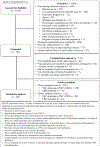Daily associations with cannabis use and sleep quality in anxious cannabis users
- PMID: 37255232
- PMCID: PMC10687319
- DOI: 10.1080/15402002.2023.2217969
Daily associations with cannabis use and sleep quality in anxious cannabis users
Abstract
Introduction: Cannabis is increasingly used to self-treat anxiety and related sleep problems, without clear evidence of either supporting or refuting its anxiolytic or sleep aid effects. In addition, different forms of cannabis and primary cannabinoids ∆9-tetrahydrocannabinol (THC) and cannabidiol (CBD) have differing pharmacological effects.
Methods: Thirty days of daily data on sleep quality and cannabis use were collected in individuals who use cannabis for mild-to-moderate anxiety (n = 347; 36% male, 64% female; mean age = 33 years). Participants self-reported both the form (flower or edible) and the ratio of THC to CBD in the cannabis used during the observation period.
Results: Individuals who reported cannabis use on a particular day also reported better sleep quality the following night. Moderation analyses showed that better perceived sleep after cannabis use days was stronger for respondents with higher baseline affective symptoms. Further, respondents who used cannabis edibles with high CBD concentration reported the highest perceived quality of sleep.
Conclusions: Among individuals with affective symptoms, naturalistic use of cannabis was associated with better sleep quality, particularly for those using edible and CBD dominant products.
© 2023 Taylor & Francis Group, LLC
Conflict of interest statement
Disclosure statement: No potential conflict of interest was reported by the authors.
Figures


Similar articles
-
Sub-chronic impact of cannabinoids in street cannabis on cognition, psychotic-like symptoms and psychological well-being.Psychol Med. 2012 Feb;42(2):391-400. doi: 10.1017/S0033291711001322. Epub 2011 Jul 29. Psychol Med. 2012. PMID: 21798112
-
Impact of cannabidiol on the acute memory and psychotomimetic effects of smoked cannabis: naturalistic study: naturalistic study [corrected].Br J Psychiatry. 2010 Oct;197(4):285-90. doi: 10.1192/bjp.bp.110.077503. Br J Psychiatry. 2010. PMID: 20884951
-
Just say 'know': how do cannabinoid concentrations influence users' estimates of cannabis potency and the amount they roll in joints?Addiction. 2014 Oct;109(10):1686-94. doi: 10.1111/add.12634. Epub 2014 Jul 16. Addiction. 2014. PMID: 24894801
-
Cannabis for the treatment of ulcerative colitis.Cochrane Database Syst Rev. 2018 Nov 8;11(11):CD012954. doi: 10.1002/14651858.CD012954.pub2. Cochrane Database Syst Rev. 2018. PMID: 30406638 Free PMC article.
-
Cannabidiol in medical marijuana: Research vistas and potential opportunities.Pharmacol Res. 2017 Jul;121:213-218. doi: 10.1016/j.phrs.2017.05.005. Epub 2017 May 10. Pharmacol Res. 2017. PMID: 28501518 Review.
Cited by
-
Inflammatory state moderates response to cannabis on negative affect and sleep quality in individuals with anxiety.Front Behav Neurosci. 2025 Jul 1;19:1549311. doi: 10.3389/fnbeh.2025.1549311. eCollection 2025. Front Behav Neurosci. 2025. PMID: 40667474 Free PMC article.
-
How Biodegradable Polymers Can be Effective Drug Delivery Systems for Cannabinoids? Prospectives and Challenges.Int J Nanomedicine. 2024 May 22;19:4607-4649. doi: 10.2147/IJN.S458907. eCollection 2024. Int J Nanomedicine. 2024. PMID: 38799700 Free PMC article. Review.
-
Daily diary study of associations between alcohol, cannabis, co-use and sleep quality in individuals with intentions to use cannabis to cope with anxiety.Drug Alcohol Rev. 2024 Feb;43(2):501-511. doi: 10.1111/dar.13778. Epub 2023 Nov 20. Drug Alcohol Rev. 2024. PMID: 37985016 Free PMC article.
-
The Interplay of Exogenous Cannabinoid Use on Anandamide and 2-Arachidonoylglycerol in Anxiety: Results from a Quasi-Experimental Ad Libitum Study.Pharmaceuticals (Basel). 2024 Oct 6;17(10):1335. doi: 10.3390/ph17101335. Pharmaceuticals (Basel). 2024. PMID: 39458976 Free PMC article.
References
-
- Ahinkorah BO, Aboagye RG, Arthur-Holmes F, Hagan JE, Okyere J, Budu E, Dowou RK, Adu C, & Seidu A-A (2021). A Multi-Country Analysis of Prevalence of Anxiety-Induced Sleep Disturbance and Its Associated Factors among In-School Adolescents in Sub-Saharan Africa Using the Global School-Based Health Survey. Healthcare, 9(2), 234. 10.3390/healthcare9020234 - DOI - PMC - PubMed
-
- Atroszko PA, Bagińska P, Mokosińska M, Sawicki A, & Atroszko B (2015). Validity and reliability of single-item self-report measures of general quality of life, general health and sleep quality. Comparative European Research, 2, 207–211.
Publication types
MeSH terms
Substances
Grants and funding
LinkOut - more resources
Full Text Sources
